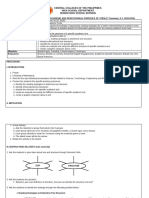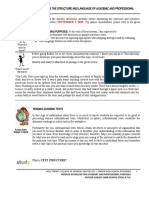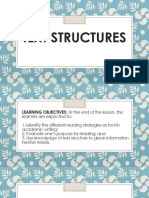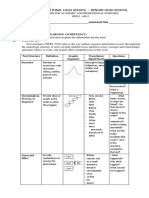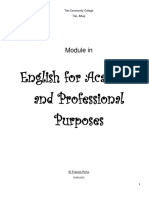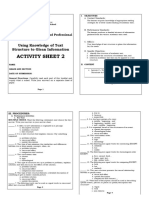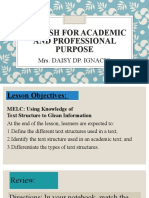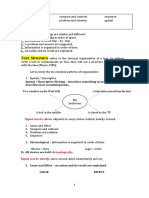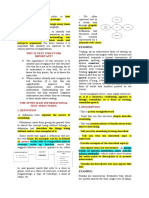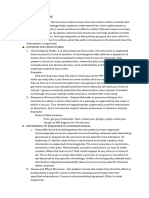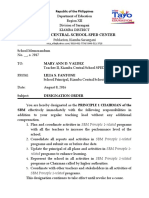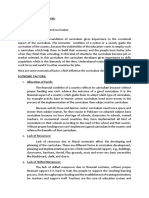0% found this document useful (0 votes)
26 views6 pagesText Structures 1
The document outlines learning objectives related to text structures in academic writing, emphasizing the importance of reading strategies and organization. It details five types of text structures: Cause and Effect, Problem and Solution, Comparison and Contrast, Chronological Order, and Description, each with definitions and examples. The lesson aims to help learners identify these structures to enhance their understanding and information retrieval.
Uploaded by
Marjie AlimagnoCopyright
© © All Rights Reserved
We take content rights seriously. If you suspect this is your content, claim it here.
Available Formats
Download as PDF, TXT or read online on Scribd
0% found this document useful (0 votes)
26 views6 pagesText Structures 1
The document outlines learning objectives related to text structures in academic writing, emphasizing the importance of reading strategies and organization. It details five types of text structures: Cause and Effect, Problem and Solution, Comparison and Contrast, Chronological Order, and Description, each with definitions and examples. The lesson aims to help learners identify these structures to enhance their understanding and information retrieval.
Uploaded by
Marjie AlimagnoCopyright
© © All Rights Reserved
We take content rights seriously. If you suspect this is your content, claim it here.
Available Formats
Download as PDF, TXT or read online on Scribd
/ 6







